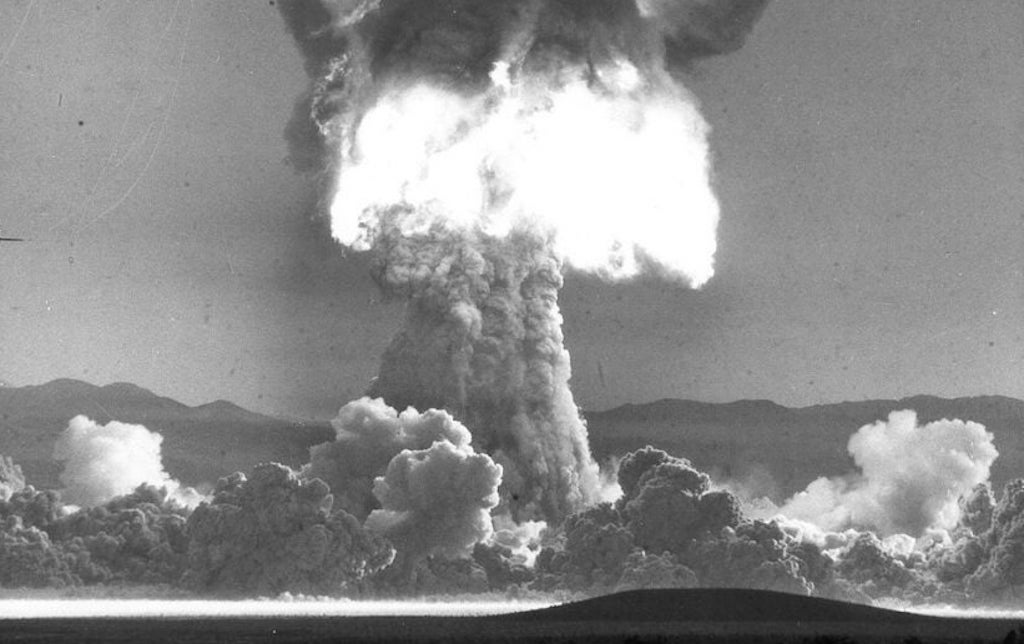

During the Cold War, there weren’t a lot of things the U.S. military wasn’t willing to nuke in the name of science. The Air Force once considered a nuclear powered bomber that would drop nukes on the Soviet Union forever. NASA once tested the effects of a nuclear blast on beer. Before we decided to send men to the moon, we actually considered nuking it first.
The Atomic Age was essentially a kid with a new toy, the U.S. military just playing around to see what its new toys could do. Still, despite its seemingly insatiable appetite for dropping nuclear weapons on stuff just because, the U.S. was really concerned with the atmospheric effects of so many nuclear explosions.
That didn’t stop them from setting off literally hundreds between 1945 and 1960, but in 1962, the United States finally began detonating nuclear devices underground instead. While it might have been better for the atmosphere, no one really knew what setting one off underground might do. Again, that did not stop anyone from doing it, they just showed their concern.
The first underground test came in 1951, but really kicked into high gear with Operation Plumbob in 1957. The research was conducted to test new warheads for ICBMs, missiles, air defense, and anti-submarine weapons. A series of 29 explosions were part of the 1957 operation, but one in particular led to the fastest manmade object in history.
During the Pascal-A test, scientists were looking at ways to contain nuclear fallout, radioactive particles sent into the atmosphere by a nuclear explosion and returning to Earth. A hollowed-out column three feet in diameter was placed 485 feet underground with the bomb inside. A metal cap was placed on the top of the column.

When the bomb exploded, it shot out of the top of the column like a roman candle. The metal cap was launched into the atmosphere at a rate that seemed unbelievable to the researchers. One of them, astrophysicist Robert Brownlee, took special notice of the cap, and wanted to know just how fast it was moving after the explosion.
He designed the next test, named Pascal-B, to measure just that. The column was placed 500 feet below ground, but this time it was recorded with a camera that filmed one frame per millisecond. When the bomb exploded, the manhole cover capping the column was only visible in one of the frames.
With this information, Brownlee was able to calculate the velocity of the cap at 125,000 miles per hour, five times the escape velocity needed to leave Earth. For perspective, rockets leaving Earth bound for space have to travel at 17,400 miles per hour.
It was going so fast, it didn’t even have time to burn up in Earth’s atmosphere, leading Brownlee to conclude that his manhole cover was also the first manmade object ever launched into space.
It wasn’t until October of that year, months later, that the Soviet Union launched Sputnik, the “first” manmade satellite to orbit the Earth. Sadly, however, scientists crunched the numbers and concluded that the metal disk was likely vaporized before leaving Earth.
To date, the fastest manmade object is the NASA Parker Solar Probe. On September 21, 2023, the unmatched Parker Solar Probe smashed its own record, previously set in November 2021. According to NASA, “Set up by a gravity-assist flyby of Venus on Aug. 21, the close approach (known as perihelion) occurred at 7:28 p.m. EDT, with Parker Solar Probe moving 394,736 miles per hour (635,266 kilometers per hour) around the Sun – another record. The milestone also marked the midway point in the mission’s 17th solar encounter, which began Sept. 22.” To give you a little perspective, that’s fast enough to travel from New York to Tokyo in less than a minute.
Read all about the 8 fastest manmade objects ever here.
